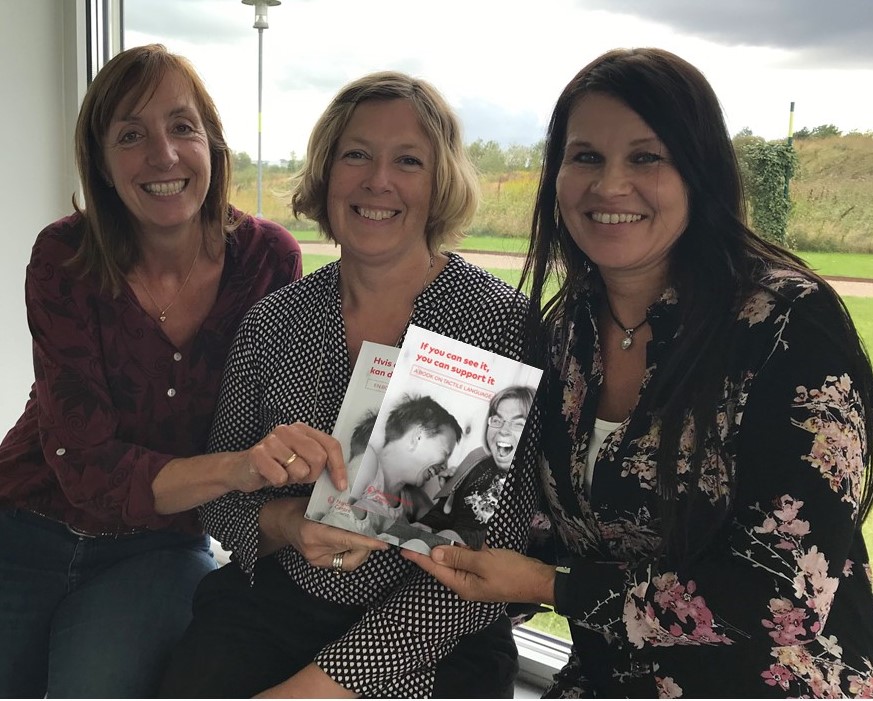Book on tactile language now in English

The idea behind the book
In the Nordic Network for Tactile Linguistics, formally established from 2014, the aim has been to try to understand how the tactile sense is used and how language develops through the tactile modality. Work in the Nordic countries and master's level studies in Groningen in the years since then have provided more knowledge. The view of accepting the expression of a thought as a language has matured, well supported by the UN Convention's definition of language and the rights of individuals to language. The network has aimed to spread the knowledge into the field of practice to support language development among people with deafblindness. This has resulted in the book "If you can see it, you can support it - a book on tactile language", which has now been translated into English. The book was edited by Helle Buelund Selling from Denmark, Kari Schjøll Brede from Norway, who both contributed with articles, and Maria Creutz from Sweden and Norden Välfärdscenter.
Maria Creutz
Maria works as a senior advisor at the Nordic Welfare Centre in Stockholm, where she is responsible for deafblindness. Previously, she worked for many years at Mo Gård in Sweden, primarily with deafblindness issues but also as a manager in various administrative functions. Her focus is on the rights of people with disabilities in general and the holistic approach to congenital deafblindness in particular. The ethical perspective when it comes to self-determination and participation for people with congenital deafblindness is very important to her. Since a young man in her family has deafblindness, she also has personal experiences.
Helle Buelund Selling
Helle works with knowledge and competence development in Denmark, based at the Centre for Deafblindness and Hearing Loss in Aalborg. Helle has a particular focus on how we support shared meaning-making and collaboratively create knowledge in a dialogical perspective.
Kari Schjøll Brede
Kari works as a senior advisor at Eikholt resource centre for deafblind people. Sign language, tactile communication and congenital deafblindness are among her main areas of work. Kari is also the mother of a young woman with congenital deafblindness. It was her daughter who got her interested in sign language and later trained as an interpreter and studied communication and congenital deafblindness, including a Master of Science at the University of Groningen.
